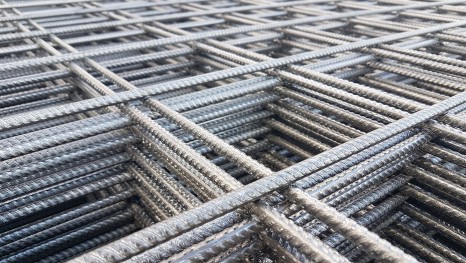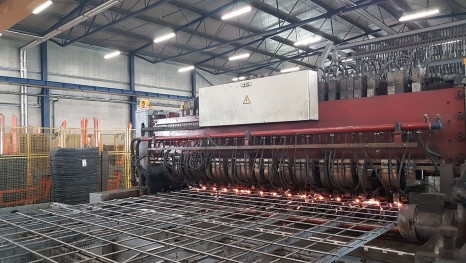
Purpose of welded meshes
A welded mesh is a technically advanced component of reinforcement. Nowadays, it is used in all aspects of ferroconcrete usage, both on site and when reinforcements are made of semi-finished products. As a semi-finished component made in factories it is a typical mass product. Designers and users have a possibility, but also it is their task to take this economic advantage of prefabrication under consideration, in order to lower the costs of buildings and of structural elements.
Because of the method of its processing, originally, meshes were used only to reinforce flat structural elements. At present, it is being used bent in structural elements the shapes of which are other than flat. The economic significance becomes visible when the rises of labour and material costs are compared. The difference stresses the importance of replacing time-consuming activities by industrial prefabrication.
Economics
Meshes allow eliminating a considerable part of manual work while placing the reinforcements on site because they are produced in factories, on automatic welding machines. In flat structural elements they require only a little cutting and bending. Thus, they contribute to the lowering of building costs. For structural elements with curved surfaces, even shorter work time can be achieved. While deciding on the type of reinforcement and of the mesh to be used in structural elements, the factors which influence the economy of the build should always be taken into consideration and analyzed. Apart from the notable savings on wages and materials, savings which are measurable only indirectly are also very important, e.g.
- a smaller number of qualified personnel
- shorter stoppage of machinery and building installations
- better usage of site infrastructure
- the buliding is put into operation earlier
- lower costs
Great importance for the choice of mesh type, apart from its purpose, has the size of the object and of the site, the organization of the building as well as delivery dates.
The simplification of the reinforcement, as an imperative for the design works, resulats from the lowering of the labour costs, which can lower the overall costs to such an extent that possible, increased consumption of material is justified. The complete programme of industrially prefabricated reinforcements on offer, such as meshes from storehouse, catalogue meshes, meshes made according to specifications and special meshes, e.g. meshes which allow to save space, constitutes an appropriate solution from the point of view of the building economy, both for the smallest building sites and for the big objects. Standardized meshes for concrete reinforcement, which are available on the market, constitute two thirds of all reinforcing meshes. The architect and the user can bave at their disposal industrially prefabricated reinforcing components from the storehouse - the mass-produced meshes.
Structures and types of meshes
Meshes are composed of reinforcement rods which cross at a right angle and which in their points of contact are machine welded. Longitudinal rods are single or double while crosswise rods are always single. By using double rods steel cross- section is doubled.
Marking
The abbreviated marking shows the sum of cross-sections of longitudinal rods per metre of mesh width, placed before the letter used to mark the mesh type.
Q - meshes with even cross-sectional area of rods per 1 running metre of edge in both directions
R - meshes with longitudinal rods cross-sectional area which is ca. five times bigger than that of the crosswise rods.
Application
In large numbers meshes are used mainly in:
- housing construction
- office and hospital buildings
- school and department store buildings
- water supply installations and sewage treatment plants
- road construction
Meshes welded on site
According to an order, meshes are delivered to a building site by lorries in marked packages. This ensures order on the site as well as a quick progress of work. The meshes also bear the producer’s signs, wire grade, package number, mesh size and the number of meshes in the package.
Processing of welded meshes
On a building site the mesh can be cut and bent on appropriate devices. Placed in double layers it is often used to reinforce the walls of ferroconcrete structures.
Production and quality assurance
Production of welded meshes can be carried out only in plants which possess appropriate welding machines and certificates which confirm the product compliance with specific standards and approvals. The above is the essential condition of putting the product on the market. The raw material for the production of welded meshes is cold-rolled, shaped and ribbed wire rod. The rods are joined by resistance welding after previous straightening and cutting. The producer is obliged to ensure a technology which allows the achievement of material characteristics specified by appropriate standards and to supervise these by external and internal quality control.
The plant’s quality control department supervises each stage of production starting from the delivery of raw material till the moment when the welded mesh leaves the plant. The external supervision includes all kinds of audits carried out by certification bodies.

PIOTR JENDRUŚ | Product Development Manager | CMC Poland Sp. z o.o.
Piłsudskiego 82 | 42-400 Zawiercie | Poland
Mobile +48 600.910.828 | piotr.jendrus@cmc.com | www.cmc.com | www.siatkizgrzewane.pl

